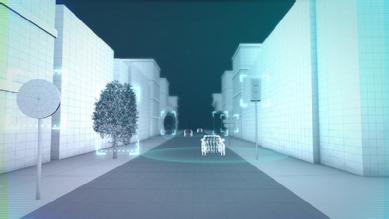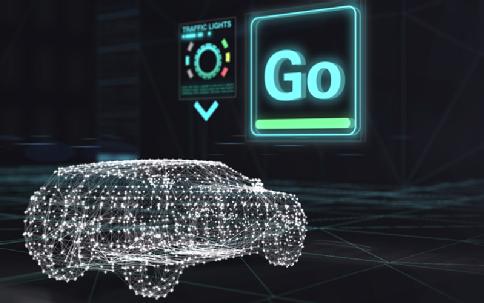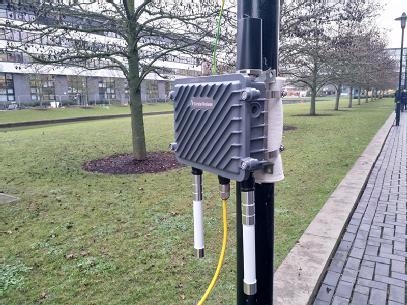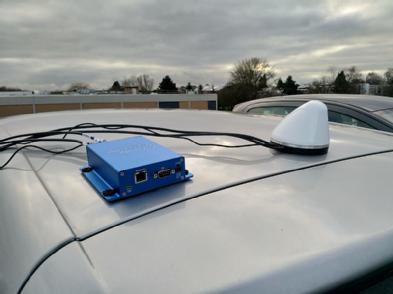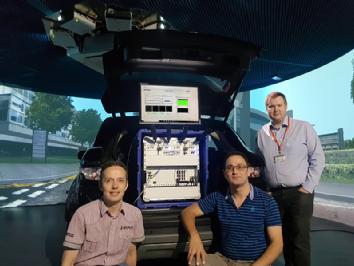WMG News
WMG named as partner in three pioneering cybersecurity projects
As a result of the Cybersecurity Feasibility Studies competition WMG has been named as a partner in three key government-funded cybersecurity projects.
The Competition was launched in August 2019 and called for the automotive industry to submit their ideas on how to create a robust cybersecurity solution to support the mainstream rollout of CAVs across the UK and ensure a solution that both addresses and informs the expectations of significant emerging cybersecurity industry standards. It has been spearheaded by government-led entities including Zenzic, Centre for Connected and Autonomous Vehicles (CCAV), Department for Business, Energy and Industrial Strategy (BEIS) and Department for Transport (DfT). Some £2million will now be invested in the seven separate projects.
WMG at the University of Warwick will be part of the project consortiums for ResiCAV, BearCAT and PNT Cyber Resilience.
ResiCAV looks at how the mobility industry will detect, understand and respond to emerging cybersecurity threats in real-time.
The ResiCAV consortium will receive a grant to help CAVs develop real-time responsiveness to cybersecurity threats. The consortium will set out the requirements and specifications for Vehicle Security Operations Centres (VSOCs) that support the monitoring demands of the forthcoming ISO/SAE 21434, plus extend the application of artificial intelligence and data visualisation techniques. Finally, ResiCAV will deliver the requirements for a UK road transport Cybersecurity Centre of Excellence to support the UK’s position of meeting the global challenge of automotive cybersecurity head on.
Combining cross-sector expertise, it will be delivered by a consortium led by HORIBA MIRA, Thales and BT, with further support from WMG at the University of Warwick, the Centre for Modelling & Simulation (CFMS), Oxfordshire County Council, AESIN Techworks, plus the University of South Wales, the University of Bristol, Coventry University and the National Digital Exploitation Centre (NDEC).
 Professor Carsten Maple said: "We are delighted to be the academic partner in the ResiCAV consortium. The project will make a real difference to ensuring the cyber resilience of connected and autonomous vehicles both in engineering and operation. We will bring our academic rigour to the project, helping to formalise the methodology, and developing the requirements and advancing the technology in machine learning to support monitoring of vehicles in operation."
Professor Carsten Maple said: "We are delighted to be the academic partner in the ResiCAV consortium. The project will make a real difference to ensuring the cyber resilience of connected and autonomous vehicles both in engineering and operation. We will bring our academic rigour to the project, helping to formalise the methodology, and developing the requirements and advancing the technology in machine learning to support monitoring of vehicles in operation."
BeARCAT
"BeARCAT brings together a strong consortium of WMG, Telefonica, Millbrook and the lead, Cisco. The project will investigate the feasibility of a coherent, holistic approach to cybersecurity testing for connected vehicle networks. Our main contribution to this work will be the development of a Security Assessment Framework for the testing of connected vehicles, taking advantage of our vast experience and knowledge acquired over a number of recent projects in the area," explains Professor Maple.
PNT Cyber Resilience
For PNT Cyber Resilience WMG researchers, led by Dr Matthew Higgins, Professor Paul Jennings and Professor Tim Watson, will be working alongside Spirent Communications investigating positioning, navigation, and timing (PNT) products and services to demonstrate and determine the feasibility of a new observer-based technique to 'attack' and test CAV PNT-related functions in both controlled and real-world scenarios.
Find more information about WMG’s Intelligent Vehicles research here.
Developing the next generation of transport solutions
The concept of widespread Connected and Automated Mobility (CAM) is quickly becoming something of a reality thanks to a national and global push to develop the next generation of transport solutions. An integral part of the Government’s Road to Zero strategy, CAM is expected to become widely deployed across the UK and will be a key driver behind ambitions to eventually achieve zero accidents, zero congestion and zero emissions on the road.
Evolving into a sector that is predicted to be worth £907 billion by 2035, CAM has also conjured new societal and technological challenges that need to be considered. At WMG, University of Warwick, we’ve been tackling some of these challenges by focusing on how to improve security, privacy and safety in connected and automated vehicles from a cyber-perspective, conducting rigorous testing and exploring innovative technologies in a real-world environment.
Overcoming public anxiety
It’s not surprising to see that earning the public’s trust and subsequently reducing anxiety around this new form of travel is somewhat of a barrier to widespread adoption. However, our work to improve the privacy and safety of connected and automated vehicles will help to demonstrate the scalability and wider benefits of this new technology.
Our real-world testing considers how vehicles will connect with each other, as well as to the roadside infrastructure, and also how parts of this infrastructure can be intelligent in the ways that they share information with each other. Our work considers how this connectivity informs the automated activity of respective vehicles and more importantly influences how we expect vehicles to react when a data breach is attempted. For example, if a hacker manages to access the data in a vehicle or vehicular system, how do we safeguard against compromising the vehicle’s identity and history, how do we protect the locations that the vehicle has visited, or indeed how do we control what the vehicle does next in terms of its interactions with the roadside and other vehicles following a breach.
Transferring information within the roadside infrastructure
When a vehicle is travelling down a road it may meet multiple vehicles in a short space of time. In order to check the identity of these vehicles, the key of the other vehicle needs to be verified. However, having to check this in-Cloud infrastructure creates additional communication overhead, increasing the time before the vehicle receives the necessary verification. Instead, through the use of ‘Decentralised PKI’, vehicles can verify messages much faster as the key information is distributed over Edge infrastructure that sits next to the road. Essentially, this means that the roadside infrastructure can communicate with each other and directly transfer shared information, such as traffic levels, vehicle speed and direction. This eliminates the reliance on Cloud servers, saving communication time.
Protecting a vehicle’s identity
For a vehicle to send and receive these sorts of messages from other vehicles and the roadside effectively and reliably, it is important that the messages it sends contain proof that the vehicle is who it claims to be; these messages can be transmitted between cars or the road’s infrastructure from up to 500 meters away. Our ‘Group Signatures’ solution proves a vehicle’s identity without allowing that individual vehicle to be tracked over a long time. This method only indicates that the vehicle is a member of a group, making it much harder for privacy to be compromised, revealing the history of all the locations a respective vehicle, and therefore individual, has visited.
Verifying vehicle identities
However, it is an expensive task for a vehicle to verify another’s identity. Vehicles will have limited computing resources and so will only be able to verify a specific number of identities of senders of messages per second.
Therefore, with our ‘Authentication Prioritisation’ solution, the order in which the identity of messages are verified is decided based on assigning a priority to the messages. These priorities can be defined by vehicle distance, direction of travel or positioning on the road. A higher priority means that those messages are verified first.
Embedding the foundations for effective adoption
As we continue our research into privacy and security issues associated with CAM, our end goal is to achieve the right technological balance to enable effective and quick communication between vehicles and the roadside infrastructure, whilst protecting the privacy of individual vehicles and allowing reliable and safe messages to be filtered by vehicles in order of importance. At WMG, we are making significant strides towards achieving these goals and supporting the ultimate objective of assisting with the widespread adoption of Connected and Automated Mobility on UK roads.
The future of mobility: Times are changing
Times are changing
If we are to seize electrification and autonomy opportunities, it’s essential that the UK develops an environment suitable for breakthrough technologies. From domestic charging solutions to developing repeatable testing environments, the UK faces big challenges and we are addressing these through our lead centre for Vehicle Electrification and Connected and Autonomous Vehicles at WMG, University of Warwick.
Electrification shaping a low carbon future
David Greenwood – Professor, Advanced Propulsion Systems at WMG, University of Warwick
Demand for electric vehicles (EVs) is surging in the UK and registrations of plug-in cars increased by more than 160,000 between 2013 and 2018. With the electrification industry estimated to be worth over £6billion by 2025, the next decade presents a massive opportunity.
As our society continues to grow, transformation in energy and mobility is required to create sustainable environments. The electrification of transport is shaping that low carbon future. Our vision at WMG is to enable the development of cleaner, safer and smarter vehicles and help drive sustainable mobility across the UK, which aligns with the Government’s ‘Road to Zero’ strategy, aiming to make road transport emission-free by 2050. Our research focuses on establishing advanced hybrid and electrical vehicles, including commercial, rail and marine, battery technology, supply chain, manufacturing and automation.
At WMG, we’re working with the UK Battery Industrialisation Centre to deliver on the UK’s Industrial Strategy ‘Future of Mobility’ Grand Challenge to transform the UK into a world leading battery manufacturer for vehicle electrification.
Connected and Autonomous Vehicles
Siddartha Khastgir – Head of Verification and Validation, Intelligent Vehicles at WMG, University of Warwick
The global Connected and Autonomous Vehicles (CAV) industry is estimated to be worth over £50billion by 2035, with the UK CAV industry comprising over £3billion of this. The UK Government's Industrial Strategy aims to bring fully autonomous cars without a human operator on UK roads by 2021, which will make us one of the first countries to achieve this.
The CAV vision is motivated by the potential societal benefits the technology offers – increasing safety, decreasing traffic congestion and driving lower emissions. At WMG, we’re striving to deliver these through Intelligent Vehicles research exploring Verification and Validation, Communications (i.e. 5G), Experiential Engineering, Supply Chains, Cyber Security and Cooperative Autonomy.
Our involvement in research programmes like the £35m Midlands Future Mobility focuses on “smart miles”, proving concepts and getting products to market. Led by WMG, Midlands Future Mobility is an “on-road ecosystem” comprising nine partners with a shared objective – To launch the first service offering of public road testing by mid-2020.
Times are changing.
Realising the Connected and Autonomous Vehicle dream
Siddartha Khastgir, Head of Verification and Validation, Intelligent Vehicles at WMG, discusses Connected and Autonomous Vehicles, achieving the long-term vision, and testing.
The vision
The global Connected and Autonomous Vehicles (CAV) industry is estimated to be worth over £50billion by 2035, with the UK CAV industry comprising over £3billion of this. Additionally, the UK Government's Industrial Strategy aims to bring fully autonomous cars without a human operator on the UK roads by 2021, which will make us one of the first countries in the world to achieve this vision. The CAV vision is motivated by a variety of potential benefits the technology has to offer – increasing safety by reducing accidents and minimising human error, decreasing traffic congestion, driving lower emissions and freeing up drivers’ time in vehicles - enabling individuals to be more productive during the work commute or the school run.
However, in order to realise this vision and the market potential, safe introduction of CAV is crucial. The diverse technological, legislative and societal barriers associated with public deployment of CAV will require significant research to overcome.
A safer way to travel
It is suggested that in order to prove that CAV are safer than human drivers, they will need to be driven for more than 11 billion miles. While this requirement has garnered a lot of publicity, the focus needs to be on what happens in those miles (i.e. smart miles which expose failures in CAV) and not on the number of miles themselves. One will not gain much information about the capabilities of a CAV system if we drive them up and down the sunny roads of a desert.
While prototype CAV technologies have existed for some time now, ensuring the safety level of these technologies has remained at the forefront of development decisions and considerations, and has emerged as a potential hindrance to the commercialisation of CAV technologies.
Presenting hard evidence-based data and trends efficiently will have a significant impact on public adoption of this new technology and the confidence levels invested. Safety is at the forefront of the case for why a future with CAV is more reliable, more efficient and less risky – But just saying this is not enough, people want to see objective insights and make their own informed decisions on how this new technology is safer.
The task of proving this is coupled with the challenge of requiring innovative testing and safety analysis methods, as interactions between large numbers of variables and the environment demand complex solutions and experimentation.
Positioning the UK as a world leader
WMG at the University of Warwick, facilitates collaboration between academia and the public and private sector to drive innovation in science, technology and engineering. Intelligent Vehicles research, at WMG, is focused on supporting the UK’s position as the world leader in CAV research and innovation for a long lasting societal and economic benefit.
Intelligent Vehicles research capability areas include Verification and Validation, Communications (i.e. 5G), Experiential Engineering, Supply Chains, Cyber Security and Cooperative Autonomy. Demonstrating safety, commercial viability and customer desirability pose three of the main challenges associated with realising the CAV vision. The “evaluation continuum” concept for CAV, at WMG, involves using digital technology to simulate various environments and conduct repeatable test track testing before launching trials in the “real-world”. WMG research is leading to the creation of international standards (ISO) for the safe deployment of CAV.
Testing in a virtual world
WMG’s 3D simulator for Intelligent Vehicles, funded by the Engineering and Physical Sciences Research Council (EPSRC), was launched in 2016 at WMG’s International Manufacturing Centre to test real-world robustness and usability of smart, CAV technology. The simulator creates virtual conditions for Intelligent Vehicles, replicating complex driving scenarios, changing lighting conditions, communications interference or unexpected events, all in a safe and repeatable environment.
The success of smart, CAV technologies, or Intelligent Vehicle technologies, will depend upon research and development, which can quickly demonstrate safety, security and robustness. Testing these technologies on-road in real-world driving situations is often complex, uncontrollable and potentially risky for early stage development. It is also reliant on the production of costly physical prototypes.
Industry trends in CAV suggest the widespread adoption of Machine Learning (ML) in the autonomous control systems. ML-systems by their structure are non-deterministic in nature, resulting in different behaviours and a lack of transparency around the CAV system. Therefore, it is often difficult to identify reasons for a particular failure in such ML-based systems and take the corrective measures.
Public road testing by mid-2020
WMG is involved in major research programmes like the £35m Midlands Future Mobility (real-world testbed), which focuses on “smart miles” by proving concepts and getting products to market with quick impact measures. Led by WMG, Midlands Future Mobility is an “on-road ecosystem” comprising nine partners from industry and local authorities all with a shared vision and objective - To launch the first service offering of public road testing by mid-2020.
WMG is also one of the seven centres in the High Value Manufacturing (HVM) Catapult and with “smart mobility” being one of the focus areas for the WMG HVM Catapult centre, their existing strong links and partnerships leave them well positioned to inform and respond to Government policy.
Achieving the Connected and Autonomous Vehicle vision
Past studies have indicated that only 50% of drivers tend to use Advanced Driver Assistance Systems (ADASs) like Lane Departure Warning. Increasing trust and acceptance of CAV technologies remains a challenge for the industrial and research community. Reaping the benefits of the CAV technologies will only happen when they are accepted by drivers and the wider public as a fundamental part of their everyday lives.
Challenges associated with realising the CAV vision are huge, but the benefits are even bigger. The only way we can achieve the CAV vision is through collaboration and knowledge exchange between various stakeholders – manufacturers, SMEs, suppliers, local councils and research organisations.
Search: WMG Intelligent Vehicles for more information.
Driving commercial opportunity: Intelligent Vehicles in the UK
 Comment from Professor Paul Jennings, Intelligent Vehicles Research Lead at WMG, talks about the commercial opportunities for intelligent vehicles in the UK.
Comment from Professor Paul Jennings, Intelligent Vehicles Research Lead at WMG, talks about the commercial opportunities for intelligent vehicles in the UK.
What's your definition of 'intelligent vehicles'?
'Intelligent vehicles' is a catch-all title for our research because we work on connectivity in vehicles; we work on automation in vehicles; and we work on projects that don't involve either. For instance, intelligence in a vehicle could be a way to achieve improved comfort and convenience features or to improve energy management.
What are the main markets for intelligent vehicles? Cars? Trucks? Public transport?
We're talking all of the above. It's important to remember that the market for intelligent vehicles isn't just so that people can move around more safely, comfortably and conveniently. It's about moving goods, too. Whatever market WMG is working in, however, it has to make sure it's here to solve problems and create new opportunities for customers and for our industry partners. Our role is to help UK companies exploit the significant emerging business opportunities through collaborative research, and through provision of new skills and education programmes.
Who are the main players in the intelligent vehicles market?
It's interesting because things have moved beyond traditional automotive companies now. At WMG, we do work with traditional companies and their supply base, of course; but there are new types of designer-manufacturers on the scene too. For example, in low-speed autonomous transport there are companies such as Aurrigo — the autonomous vehicle division of RDM Group — which designs and manufactures low-speed driverless pods here in Coventry. It is also important that we work with other key sectors too, such as wireless communications, simulation and transport infrastructure. Collaboration with authorities such as Transport for West Midlands is also crucial.
What are the main commercial drivers for companies in the intelligent vehicles space?
I'd put safety at the top of the agenda because, first and foremost, everyone wants to be safe. Then there are lower emissions and better energy efficiency. I don't think we can necessarily expect intelligent vehicles to reduce congestion, but they should be able to give us much better estimates about journey times. Also, there's a chance to make different modes of transports work better together — for example improving links between road and rail.
How can UK companies best take advantage of the commercial opportunities they identify?
The Midlands Future Mobility environment we, and our consortium partners, are creating is very exciting and will give real advantages to UK companies. It's going to be a place where they can come to trial their new vehicles, technologies and services in the real world, with proper public and user-engagement. That's a great opportunity for them to learn more from trials, and have the process made easier for them. It's also good for the Midlands which will experience those new technologies and services earlier than everyone else.
How do you see commercial opportunities developing in the future?
I think the whole supply chain will change dramatically. There will be an increasing importance on software, sensors, perception systems and connected components. But I think, over time, business models will change more dramatically as transport becomes more of a mobility-focused service industry, with customers buying 'journeys' rather than 'vehicles'.
Advanced Driver-Assistance Systems: Accelerating the move to autonomous vehicles?
Comment from Siddartha Khastgir, Head of Verification and Validation, Intelligent Vehicles at WMG, reveals how the public views advanced driver-assistance systems (ADAS) — and if these technologies might help with the development of driverless vehicles.
How were advanced driver-assistance systems first received by the public?
When first introduced in the mid to late 1990s, ADAS was largely given a positive reception because applications such as adaptive cruise control (ACC) and anti-lock braking (ABS) were marketed as important safety features — and safety always plays well with the public. But by the early 2000s, trust in ADAS had began to plummet. One reason for this is that the limitations of some ADAS features were not always made clear to drivers, who only discovered their shortcomings by using them. That stands to reason: if I think a system works all the time, but then it suddenly stops working, my trust in it will fall.
How is ADAS received — and used — today?
There is evidence to suggest that people want and are willing to pay for ADAS features; but there's another piece of evidence which suggests they don't use them all the time because they don't fully trust them. That said, popular ADAS features include automated emergency braking (AEB) and electronic stability control (ESC), which are intermittent applications mandated through law in new cars. Indeed, buyers of new vehicles expect mandated ADAS to be included in their purchase.
What are the challenges ADAS systems present to the automotive industry?
One of the biggest is testing because it's very important to ensure that the application is safe. There's also the challenge of getting people to accept it and use it because, as human beings, we like to be fully in control of everything we do. There's also a challenge with insurance, although more so for autonomous vehicles than ADAS. Namely, if there's an accident when the car is in autonomous mode, whose fault will it be? That's an area that's still being worked on. As technology advances, a standard MOT procedure may not be relevant anymore; plus trainees and technicians in garages will need to be re-skilled. Academia and industry needs to focus on how to get supply chains ready for these changes. At WMG we're doing a lot of work in this area with the WMG Degree Apprenticeship Centre which will be opening shortly.
Does the public's reaction to ADAS indicate how it might greet the emergence of fully autonomous cars?
I think it does. At WMG we work on a concept called Informed Safety, which is about growing trust through knowledge. If manufacturers inform users about what ADAS can and — more importantly — cannot do, then acceptance of it will be much higher.
How might use of ADAS help with the development of autonomous systems going forward?
ADAS is a first step on the journey. Some aspects of ADAS are transferrable to autonomous vehicle technology, others need to be re-engineered. Still, the big difference between ADAS and fully autonomous vehicles is that, with the former, the user still has control. With the latter they're giving up complete control. That's a big, counterintuitive jump to make.
What does 5G offer over 4G communications for Connected and Automated Mobility?
 Comment from Dr Matthew Higgins, Associate Professor for Connectivity and Wireless Communications, WMG.
Comment from Dr Matthew Higgins, Associate Professor for Connectivity and Wireless Communications, WMG.
As is becoming ever more apparent, Connected and Automated Mobility (CAM) is one of today’s most exciting research and innovation themes within both industry and academia.
It is being demonstrated now on a daily basis through the media that CAM may provide real world impact on societal issues around safety, traffic flow and emissions.
Connections with the roadside infrastructure
Whilst an automated vehicle is able to make decisions on how to judge local situations, the ‘connected’ element is pivotal to enhancing the decision making process to include information from the wider road network.
For example, the ability for CAM to exchange inertia, LiDAR, camera, and radar sensor data, alongside video data from roadside infrastructure provides each vehicle with timely awareness of what is beyond their isolated line of sight. This in turn enables behaviours such as collision avoidance, adaptive speed control or platooning.
A key factor for this to happen is the networks’ ability to seamlessly share high volumes of data with appropriate timeliness.
As consumers we are all used to the ‘G’, or generation, labelling which is attached to our phones. The dominant generation of devices are now 4G, which superseded 3G devices through technical changes in the way the network was designed and led to faster speeds with more responsiveness for our current data driven lifestyle.
Enhancing collision avoidance capabilities
5G is used to describe the fifth generation of mobile communications technologies. Crucially, 5G is more than just a faster internet connection. As a direct comparison over 4G, 5G will have a peak data rate 20 times currently on offer – up to 20Gbit/s, a user experience data rate 10 times that of now – up to 100Mbit/s, but it is the fall in latencies by 10 times to 1ms that makes 5G useful in CAM.
This fall in latency (the time it takes for data to complete its journey) will be critical to enhancing collision avoidance capabilities where every millisecond counts. Also the enhanced peak date rate will allow the sharing of high definition images between infrastructure and vehicles which may assist in so called ‘smarter decisions’ that include contextual information of the situation.
The path to 5G communications providing these capabilities is ongoing, but progressive initiatives by Government from the Centre for Connected Autonomous Vehicles (CCAV) and the Department for Culture, Media, and Sport (DCMS) are accelerating the UKs international competitiveness.
UKRI fellowships awarded to seven University of Warwick academics
Several academics at the University of Warwick have been awarded a UKRI Future Leader Fellowship, providing world-class research in topics including autonomous vehicles to life in outer space.
The UK Research and Innovation Future Leaders Fellowships (FLF) scheme is designed to increase the supply of talented individuals needed to ensure that UK research and innovation continues to be world class.
Seven academics from the University of Warwick have been awarded a future leader fellowship, which will help develop their careers as some of the best researchers and innovators from around the world in the UK.
The academics involved vary from Sciences and Social Science faculties. They are:
· Dr Matthew Spencer – Centre for Interdisciplinary Methodologies
· Dr Tom Gur – Computer Science
· Dr Benjamin Richards – Physics
· Dr Richard Moore – Philosophy
· Dr Angela Aristidou – Warwick Business School
· Mr Siddartha Khastgir – WMG
· Dr Heather Cegla – Physics
Responding to the success of University of Warwick academics securing Future Leadership Fellowships from UKRI, Professor Pam Thomas, the University of Warwick’s Pro-Vice Chancellor for Research said:
“I am delighted to see University of Warwick researchers being recognised by UKRI, and for them to receive support for their ground-breaking research. Drawn from across our University, the seven fellowships are welcome recognition of the depth, breadth and ingenuity of Warwick research. I wish our academics the very best as they continue their work and greatly look forward to following their progress.”
Universities Minister Chris Skidmore comments:
“Delivering on our research and innovation ambitions means putting people first, whether they are just starting out in their career or are leading major projects in academia or industry.
“These inspirational Future Leaders Fellows will generate the ideas of the future, helping to shape science and research for the 21st century. But to realise the full potential of these discoveries, their ideas need to be taken out of the lab and turned into real products and services, where they can actually change people’s lives for the better.
“That’s why we are creating 20 new University Enterprise Zones, helping local start-ups to co-locate in universities to build the businesses of the future – all inspired by university research.”
Professor Sir Mark Walport, UK Research and Innovation’s Chief Executive, said: “The Future Leaders Fellowships will enable the most promising researchers and innovators to become leaders in their fields, working on subjects as diverse as climate change, dementia and quantum computing.
“UKRI is committed to creating modern research and innovation careers and our Future Leaders Fellowships aim to support and retain the most talented people, including those with flexible career paths."
Dr Matthew Spencer, of the University of Warwick’s Centre for Interdisciplinary Methodologies will be researching Cybersecurity, will focus on producing new insights about cyber security practice through ethnographic analysis in Critical National Infrastructure organisations, closing the loop between cyber security policy and practice and develop new participative methods to improve cyber security practice.
Commenting on his research Dr Tom Gur, of the University of Warwick’s Department of Computer Science, said that it will be “focused on pushing the boundaries of classical and quantum verifiable computing and its real-world applications to delegation of computation to the cloud, as well as to blockchain technology. Its primary objective is to develop a wide arsenal of tools that would open new possibilities for meeting the challenges imposed by big data and the need for decentralised peer-to-peer systems.”
Dr Benjamin Richards, of the University of Warwick’s Department of Physics, says that he intends to “make a vital measurement of the rate and energy of neutrinos that arrive from distant supernovae throughout the galaxy. The properties of these neutrinos will tell us much about the wider composition of the universe as well as neutrinos themselves. This measurement will allow us to test the rate of black hole formation in the universe, test our models of supernova and tell us about the origin of heavy elements and metallicity of the galaxies.”
Dr Richard Moore, of the University of Warwick’s Department of Philosophy, will use the tools of philosophy, linguistics, and psychology to develop a new account of the developmental relationship between 'mindreading' and communication. Commenting, Dr Moore said: “Mindreading, involving the use of a 'theory of mind' (ToM) is the ability to attribute mental states to others to predict and explain their behaviour. Humans are better at this than other species, but the origins of uniquely human forms of ToM are disputed.”
Dr Angela Aristidou, of Warwick Business School, proposes to study the challenges of partnering across sectors, focusing on partnerships between the public sector and third sector, including charities, voluntary and community organizations. Commenting, Dr Aritidou seeks to examine these innovative partnerships, “I propose a project that leverages a multi-case, longitudinal design and draws on management, economics and public policy research”.
The research by Mr Siddartha Khastgir of WMG at the University of Warwick will focus on the global Connected & Autonomous Vehicles (CAV) industry, worth over £50billion (by 2035), with the UK CAV industry being projected over £3billion. Commenting, Mr Khastgir said that “the UK Government's Industrial Strategy aims to bring fully autonomous cars on the UK roads by 2021, one of the first countries in the world to achieve this. However, in order to realise this vision and the market potential, safe introduction of CAV is necessary, requiring significant research to overcome diverse barriers (technological, legislative and societal) associated with public deployment of CAV.”
Dr Heather Cegla of the University of Warwick’s department of Physics will use her research to help try and answer one of the biggest questions of all; Are we alone in the Universe? To understand the origins of life in the cosmos, we must also create a complete picture of planetary formation, evolution, and habitability. Commenting Dr Cegla said she aims to “understand and disentangle a fundamental barrier on the pathway to confirming other Earths: the stellar surface inhomogeneities from convection. Planet confirmation requires a mass measurement, which can be determined from the Doppler shift of the absorption lines in the stellar atmosphere.”
ENDS
20 SEPTEMBER 2019
NOTES TO EDITORS
For further information please contact:
Alice Scott
Media Relations Manager – Science
University of Warwick
Tel: +44 (0) 2476 574 255 or +44 (0) 7920 531 221
E-mail: alice.j.scott@warwick.ac.uk
Cyber security of Connected Autonomous Vehicles trialled
- The security, privacy and safety of connected autonomous vehicles (CAVs) has been improved thanks to testing at WMG, University of Warwick
- WMG undertook real-world testing of four innovations in the IoT-enabled Transport and Mobility Demonstrator.
- They were able to connect CAVs to other CAVs and roadside infrastructure more securely and privately.
The privacy and security of data in CAVs has been improved thanks to WMG, University of Warwick who tested four innovations that were results of the PETRAS project. CAVs can now connect to each other, roadside infrastructure, and roadside infrastructure to each other more securely.
In the near future Connected and Autonomous Vehicles are expected to become widely used across the UK. To ensure a smooth deployment, researchers from WMG, University of Warwick undertook real-world testing of four academic innovations in the IoT-enabled Transport and Mobility Demonstrator project funded by Lloyd’s Register Foundation.
The testing looked at how the vehicles will connect to each other, as well as to roadside infrastructure, and the roadside infrastructures to each other.
The four innovations tested were developed within the PETRAS Internet of Things Research Hub and aimed to improve the security, privacy and safety of future connected vehicles.
The four new innovations included:
1. Group Signatures
For a vehicle to communicate it is important that the messages it sends contain a proof that the vehicle is who they claim to be (via a digital signature). However, by revealing and proving the vehicle’s identity it allows that vehicle to be tracked over a long time. In order to provide privacy a group signature can be used, which only indicates that the vehicle is a member of a group.
The group signature scheme can be extended to use a timestamp that updates every 10 minutes as a component of the signature. Therefore, if the vehicle was to send the exact same message at 10:00am and 10:10am the group signature would differ and an eavesdropper would not be able link that the vehicle sent both messages. This scheme would be useful in vehicle platooning where vehicles want to demonstrate they are part of the platoon group.
2. Authentication Prioritisation
It is an expensive task for a vehicle to verify another’s identity. Vehicles will have limited computing resources and so will only be able to verify a specific number of identities included in messages per second. For example, if a vehicle is on a busy motorway in traffic there may already be more vehicles sending messages that can be verified in a timely manner. An adversary may also try to send many messages with incorrect signatures in order to prevent vehicles from verifying the identity of actual vehicles. Therefore the order in which the identity of messages are verified is decided based on assigning a priority to the messages. A higher priority means that those messages have the identity of the sender verified first.
3. Decentralised PKI
When a vehicle is travelling down a road it may meet multiple vehicles in a short space of time. In order to check the identity of these vehicles, the public key of the other vehicle needs to be downloaded from a keyserver. However, hosting this keyserver in the cloud has limitations due to additional communication hops increasing the time before the vehicle receives the necessary keys. Instead, vehicles can receive these keys faster if the keysever is distributed over Edge infrastructure that sits next to the road.
4. Decentralised PKI with Pseudonyms
This innovation extended the previous innovation to support periodically issuing new identities to vehicles on the road to provide privacy. Both this innovation and group signatures may be required, as they are useful in different scenarios.
Each of the techniques above were demonstrated in the real world on the campuses of the Universities of Warwick and Surrey, as well as Millbrook Proving Ground.
A follow up executive summary, informed through feedback when the work was presented at the House of Lords, is now available. The summary makes a number of recommendations, including more communication infrastructure should be deployed, and that researchers should have an ability test different types of cyberattacks on CAVs and roadside infrastructure. 5G should also be used to perform the testing, as 5G is being rolled out across the UK in the future.
Lead of the project Professor Carsten Maple of WMG, University of Warwick comments:
“The cyber-security of CAVs is key to make sure that when the vehicles are on the roads, the data is trustworthy and that vehicle communications do not compromise privacy. We tested four innovations developed in the PETRAS Project, and being able to apply them to the real world is the first major step in testing security of CAV systems.
“The units being investigated to be used in cars and on the roadside were taken to Parliament in February to demonstrate how they work; now we can focus on further testing in the real world. Future work include will include testing on 5G systems, and with different types of attacks”.
Enhancing the quality of future mobility services through leading 5G research
- Self-driving vehicles can use 5G for remote driving and enhanced vehicular perception through the sharing of sensor data with other vehicles and the roadside infrastructure
- As 5G becomes ever more popular, researchers at WMG, University of Warwick, install Europe’s first over-the-air 5G New Radio test user equipment.
- The equipment will be used in connected autonomous vehicles on the Midlands Future Mobility testbed.
A future of self-driving vehicles enabled by the latest high-speed 5G mobile technology is to be investigated by the University of Warwick thanks to the installation of state of the art test equipment.
The first over-the-air 5G New Radio standard-compliant test user equipment (UE) in Europe has been homed at WMG, University of Warwick. The equipment will be put in Connected Autonomous Vehicles (CAVs) being tested on the Midlands Future Mobility (MFM) testbed on the University campus, to share sensor data with other vehicles and the roadside infrastructure.
With the accelerating deployment of 5G functions on existing wireless telecommunication networks, the time is right to test the full potential of 5G independently. As the lead of the MFM testbed for CAVs, WMG, at the University of Warwick, has set enabling and performance testing of high throughput, low latency CAV use cases as one of their key research focusses.
Its use cases include remote driving and enhanced vehicular perception through the sharing of sensor data with other vehicles and the roadside infrastructure. Moreover, WMG also aims to enhance the quality of future mobility services by exploring how to seamlessly stream infotainment content for CAV passengers over a 5G link.
In this role, WMG have just installed Europe’s first 5G New Radio test UE that is fully compliant with Release 15 of the 5G technology standard developed by the 3GPP. It can emulate full UE operation and test real-time performance of 5G wireless connections to external base stations.
The mobile UE can be placed inside MFM vehicles on its 5G campus testbed, and payload data can be sent through 5G infrastructure into its further 5G network.
WMG and MFM are already engaged with a variety of industrial partners regarding connectivity, technology verification and validation, and the understanding and optimisation of user interaction with driverless technology. This new installation will further support their leading role in CAV development and testing, and help them accelerate the related product and service design and deployment.
Besides providing 5G automotive communication, this technology is, among others, also transferable to the manufacturing sector and supports Industry 4.0 use cases in which massive connectivity, high throughput and low latency mobile communication requirements exist as well.
A team of researchers led by Dr Matthew Higgins, Associate Professor at WMG, is now integrating this new technology component from NI into their current projects.
WMG’s Dr Matthew Higgins said:
“Crucial to our research strategy is the ability to understand and demonstrate the potential of 5G communications systems to our project partners early in their product development cycle. NI’s latest 5G test solution enables us to conduct standard-compliant, real-time 5G link performance tests inside both a controlled lab environment as well as outdoors in campus trials before commercial hardware is available.”
Dr Erik Kampert, HVM Catapult Senior Research Fellow added that:
“Being experienced users of state-of-the-art 5G communications equipment, this unique UE solution from NI facilitates us to expand our capabilities for CR&D work and collaborative project with CAV partners.”
James Kimery, Director of Wireless Research and SDR marketing at NI said:
“5G promises to not only revolutionize the wireless industry but also pervade and expand into other areas. For 5G application research, standard compliant technologies and solutions such as the NI Test UE are critically important to furthering this research and spurring innovation. NI is very excited to work with researchers at WMG and MFM and applaud their vision of evolving 5G into automotive, manufacturing, and beyond.”


